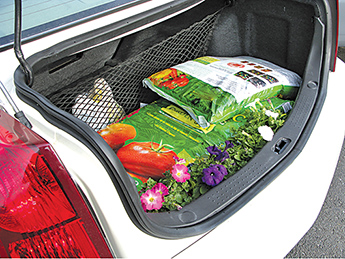For plants to truly flourish, the right growing conditions and soil that offers the right nutrients is of paramount importance. Fertilizer enhances soil so that plants and flowers can thrive. However, fertilizer is not a one-size-fits-all mix.
Choosing fertilizer can be a little overwhelming thanks to the variety of formulations available at neighborhood lawn and garden centers. Shelves contain all-purpose products, such as those billed as vegetable fertilizer, and even formulations geared toward specific flower varieties. Others may feature buzz words like “all-natural” or “organic,” and consumers may not be sure just what they need to keep plants healthy. The following guidelines can help any would-be gardener or landscaper grow more vibrant plants.
Start with a soil test
It’s difficult to determine what plants need without an accurate picture of what’s going on in the ground. A soil test can paint a picture of what’s going on and indicate if any nutrients are lacking. A common misconception is that gardeners fertilize plants. But fertilizer amends the soil that feeds plants, according to the soil-testing lab professionals at Virginia Tech. Soil types vary by region, and conditions may even vary between spots on a landscape. Testing where the plants will be placed can yield the most accurate results. Soil tests are available at gardening centers and online. Otherwise, landscaping professionals can conduct tests.
Know the N-P-K ratio
Most fertilizers will come with information concerning the nutrients within. Most notably it will have a breakdown of how much nitrogen (N), phosphorous (P) and potassium (K) is in the mix. Judging by the soil test, gardeners can choose a product that will give them the right ratio to amend the soil for the type of plant they are hoping to grow. Complete fertilizers often have NPK in the formulation. Incomplete fertilizers may have only one or two nutrients. This allows a person to customize fertilizer even more without overdoing it with a particular nutrient.
Grow plant knowledge
A cursory knowledge of the plants being planted in the garden also can be helpful. Gardeners must recognize that some plants will not tolerate excess amounts of a particular fertilizer component, while some may need more. Checking books out of the library, seeking information online and consulting with landscaping experts will help expand homeowners’ knowledge about plant types and the needs of each particular plant they hope to grow.
Solid and liquid fertilizer
Fertilizers are generally sold in pellets, spikes and liquid forms. Pellets or granules are dispersed over large areas and will gradually offer nutrients when the soil is watered. Liquid fertilizer is concentrated and fast-acting. These may be used for container plants or smaller areas. Spikes usually are placed in houseplants or to feed individual trees or shrubs. Depending on the formulation, fertilizer may need to be reapplied once a month or more. Consult the product packaging for the correct application advice.
Fertilizer amends soil to grow stronger, more resilient plants.





Leave a Comment
Your email address will not be published. Required fields are marked with *